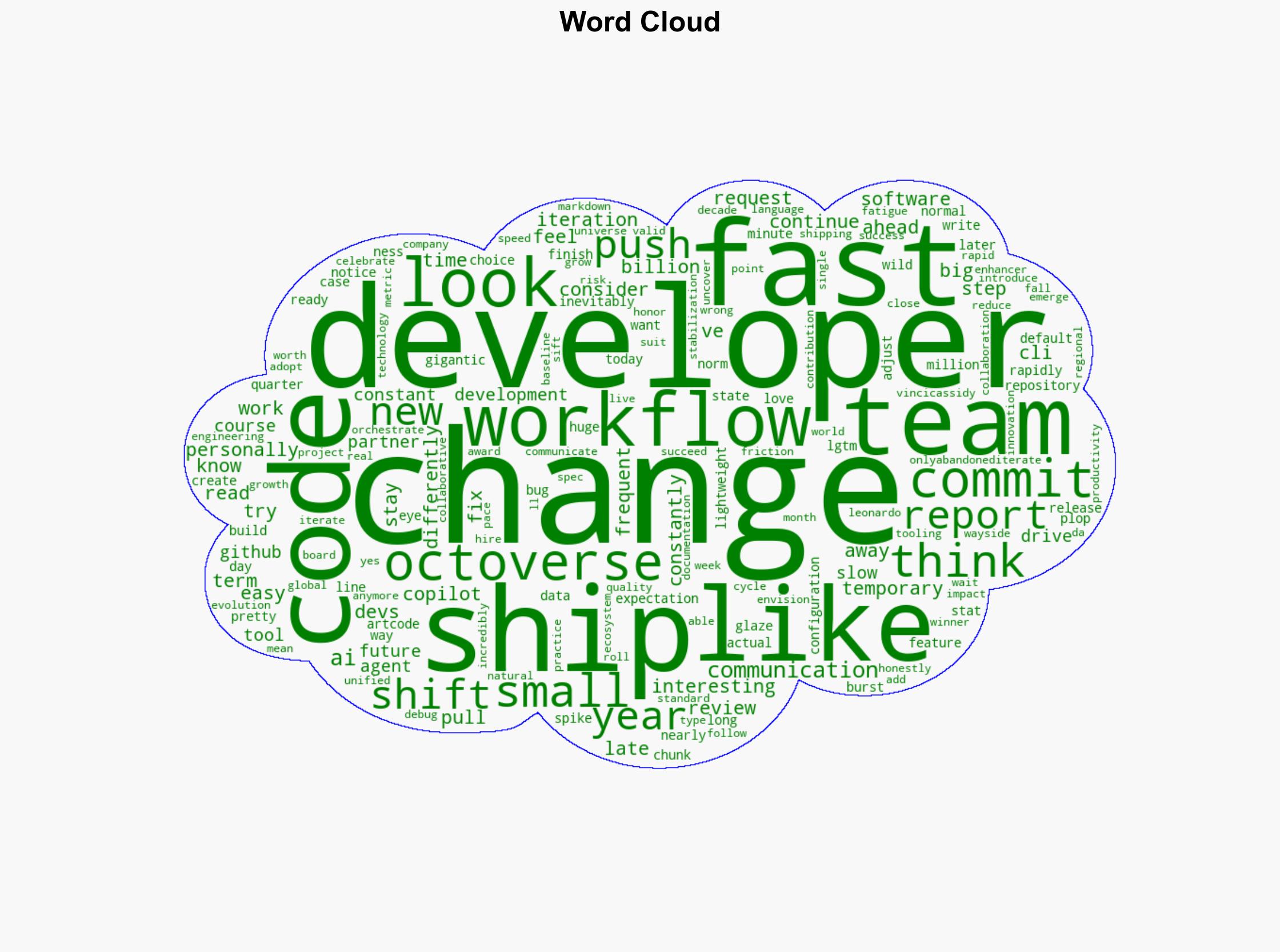What 986 million code pushes say about the developer workflow in 2025 – Github.blog
Published on: 2025-11-07
Intelligence Report: What 986 million code pushes say about the developer workflow in 2025 – Github.blog
1. BLUF (Bottom Line Up Front)
The analysis suggests a high confidence level that the developer workflow is undergoing a significant transformation towards more rapid and iterative processes, driven by AI integration and a shift in cultural norms. The most supported hypothesis is that this change represents a long-term shift rather than a temporary trend. It is recommended to invest in AI-driven tools and training to maintain competitive advantage and adapt to the evolving workflow dynamics.
2. Competing Hypotheses
1. **Hypothesis A**: The increase in code pushes and iterative development is a permanent shift in developer workflows, driven by AI tools and a cultural shift towards faster, more frequent updates.
2. **Hypothesis B**: The current trend of rapid code pushes is a temporary spike influenced by recent technological advancements and may stabilize or revert as developers experience AI fatigue or encounter integration challenges.
Using ACH 2.0, Hypothesis A is better supported due to the consistent pattern of increased code pushes and the integration of AI tools like GitHub Copilot, which facilitate this shift. Hypothesis B lacks supporting evidence of a slowdown or reversal trend.
3. Key Assumptions and Red Flags
– **Assumptions**: It is assumed that AI tools will continue to enhance productivity without significant drawbacks. Another assumption is that the cultural shift towards faster iterations is sustainable.
– **Red Flags**: Potential AI fatigue and the possibility of over-reliance on AI tools could lead to decreased developer satisfaction and productivity. There is also a risk of security vulnerabilities due to rapid code changes.
– **Blind Spots**: The analysis does not account for potential regulatory changes affecting AI tool usage or unforeseen technological disruptions.
4. Implications and Strategic Risks
The shift towards rapid, iterative development could lead to increased innovation and faster time-to-market for software products. However, it also poses risks such as increased cybersecurity threats due to frequent code changes and potential burnout among developers. Organizations slow to adapt may face competitive disadvantages.
5. Recommendations and Outlook
- Invest in AI-driven development tools and provide training to ensure effective integration into workflows.
- Implement robust cybersecurity measures to mitigate risks associated with rapid code changes.
- Monitor developer satisfaction and productivity to address potential AI fatigue.
- Scenario Projections:
- Best Case: Seamless integration of AI tools leads to unprecedented productivity and innovation.
- Worst Case: AI fatigue and security vulnerabilities undermine workflow efficiency and developer morale.
- Most Likely: Gradual adaptation to AI tools with periodic adjustments to address emerging challenges.
6. Key Individuals and Entities
– GitHub as a key entity driving workflow changes through AI tool integration.
7. Thematic Tags
software development, AI integration, cybersecurity, workflow transformation, developer productivity





